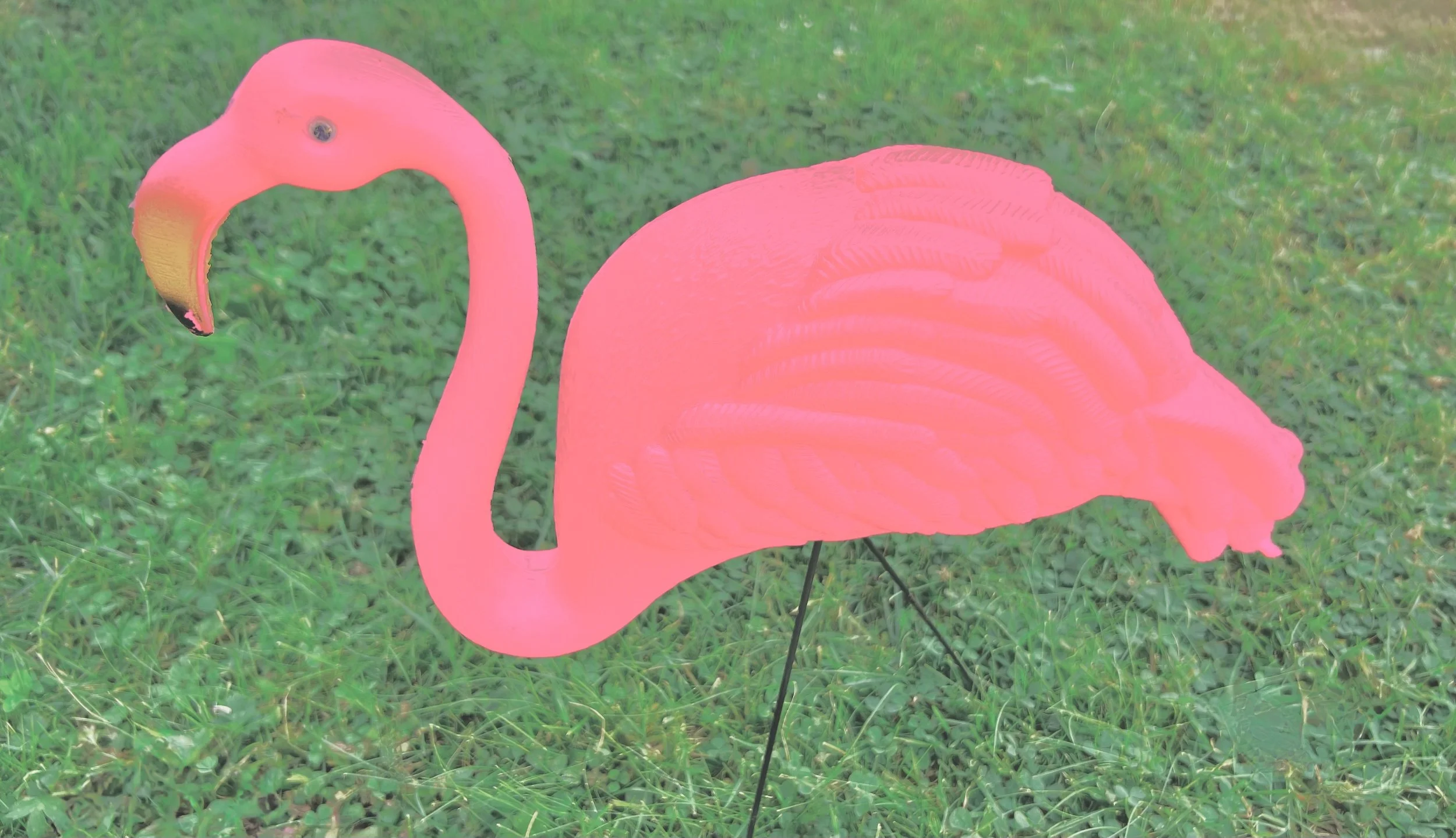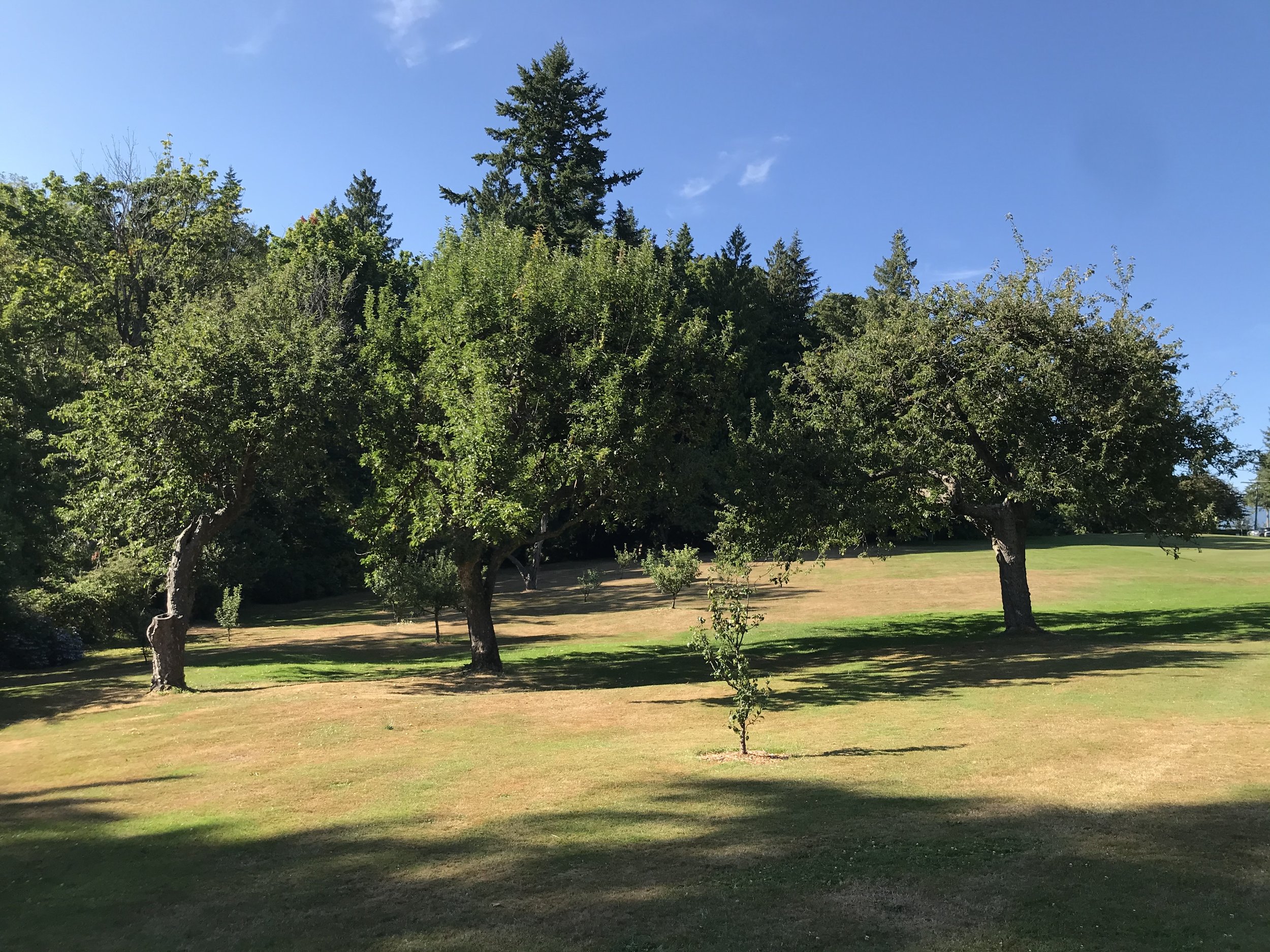In the 1880s, when the North Shore was sparsely populated, the City of Vancouver decided to obtain water from the Capilano River. Capilano Road stems from this original decision.
The Legacy of Alfred Wallace
The Age of the Atomic Garden: Trends that Shaped Gardens in the 1950s
The 1950s was a decade that was part of the “atomic” age, when Cold War concerns were high. Along with this modern trend of nuclear and other new technology, gardens also became much more “modern” and made the leap from front-porch-centred flower garden to sprawling, backyard lawn paradise. Read on to learn about some popular 1950s garden trends such as the colour “flamingo pink”, discover how gardens changed drastically into the type we’re most familiar with today, and even read about how there was some literal “atomic” gardening happening back then.
“Snap Shots” into the Life of the Goldsmith-Jones Family
When Tom from Urban Repurpose made this post to the store’s Facebook page, it immediately piqued my interest as I know this house! It’s a gorgeous Arts and Craft house that features prominently on the East Keith streetscape. I rushed in to see the photo and learned that it was part of a “Snap Shots” photo book that had been donated to his non-profit store. I quickly realized it documented the personal life of the family who lived in that home. Tom very kindly agreed to donate this important historical document to the North Vancouver Archives where it could remain in the public domain. After some detective work, I determined that it had once belonged to Gwen, the daughter of the original owner of 368 East Keith, William Goldsmith-Jones. The story that this book tells is amazing as it documents the life of the Goldsmith-Jones family from the time William arrived in Canada in 1908, to when his own children were adults, all in one book! Who needs an i-Cloud?! The “Snap Shots” book features photos of their various homes (all still standing!), their family members, treasured pets, close friends, their favourite vacation spots, their leisure activities and their places of employment. Alone, these photos tell a story of a pioneering North Vancouver family who were an integral part of society in the early 20th century. But then I tracked down two grandchildren of William Goldsmith-Jones, Geoffrey and Leslie, who really brought Gwen’s “Snap Shots” book to life!
Tudor Revival Style of Architecture
Have you ever found yourself wandering the streets of your neighbourhood, admiring the homes, both old and new, only to wonder what style of architecture a certain home might be? Well, we at the North Shore Heritage Society are here to help! In the next part of our architecture series, we will be looking at the Tudor Revival style.
Street Names in North Vancouver
The origin of the street names on the North Shore provides a fascinating history into the development of the North Shore as we know it today. This blog covers the people and places behind some of the names, starting with LONSDALE but also discussing Bridgman, Fell, Hamilton, Cloverley, Keith, Mahon, Moody, .Heywood, Pemberton, Whitchurch, Adderley and Shavington.
Ice Cream, Strawberries and Piano Music: A Celebration of the Front Porch on Vancouver’s North Shore
Homes all over the North Shore have front porches and verandahs, but what are these vestiges from the past really about and why were they so important in building community on the North Shore? Find out the answers to these questions as well as read about some of the many wonderful things that took place on these structures on the North Shore in the early 1900s, learn where the idea for the verandah comes from, and discover why they are still so iconic today.
Doubly Spectacular Heritage Project
It all started with the January 7, 2020 North Shore News article “1908 Heritage Home Offered for Free”. The “Copper Cottage”, on the CNV Heritage Register, was slated for demolition but the developer had given it a last-minute reprieve, if North Shore Heritage could find someone to take it. Two years later, Tony Dean and Yvonne Perrault, have undertaken the most mammoth job of relocating, renovating, restoring not just the Copper Cottage but also the original 1920 house that sat at the back of their lot at 532 East 10th. The outcome is Doubly Spectacular, pun intended!!!
Happy May Day!
Although this spring has felt more like an extended winter, the days are getting longer, the flowers are finally blooming, and the weather is slowly warming up. People have been celebrating the coming of spring for thousands of years, and for many years so did the people of North and West Vancouver with annual May Day celebrations throughout the community.
Lilian McNair- First May Queen with 3 attendants. 1909. Image Courtesy of MONOVA/North Vancouver Archives. INV 9187
May Day is no longer celebrated on the North Shore, but our neighbours in New Westminster have the longest continually observed May Day in the British Commonwealth. Queen Elizabeth II and Prince Phillip even attended a May Day celebration in New Westminster in 1971!
In 1870, at the end of the gold rush, New Westminster was no longer the capital of British Columbia and the population had dwindled to a mere 500 people. The future of the city seemed grim, and morale was low, so a group of local citizens decided to organize the very first May Day on May 4, 1870, to bring cheer to the community.
May Queen Kitty Loutet's decorated horse-drawn carriage behind line of North Vancouver City firemen. 1922-1927. MONOVA/North Vancouver Archives. INV 10784
Scholars believe that May Day originated in ancient Europe and possibly as far back as the Roman era as a celebration of Flora, the goddess of flowers, Dionysus, the god of wine and festivity, and Aphrodite, the goddess of love and beauty. It was a celebration to ensure the fertility of the crops, livestock, and community. It is also linked to Beltane, the Gaelic spring festival celebrated on May 1st, and was celebrated as a holiday in many pagan traditions related to agriculture and fertility. Regardless of its origins, the celebration of spring was one of joy and light-hearted fun in the outdoors as the warmer weather of spring and summer began.
Unfortunately, the pagan roots of May Day celebrations were not popular with the established Church or State in Europe. In the sixteenth century, there were huge riots when May Day was banned. Fourteen rioters were hanged, and Henry VIII is said to have pardoned more than 400 rioters sentenced to death. By 1645, May Day had mostly disappeared when Oliver Cromwell and his Puritans were in power. Maypole dancing was described as “a heathenish vanity generally abused to superstition and wickedness” and legislation was passed to ban maypoles across the country.
In 1660, the celebration of May Day was restored. ‘The Merry Monarch’, King Charles I, was back on the throne and to help ensure the support of his subjects, he erected a 40-metre-high maypole in London’s Strand. The pole signalled the return of fun times and remained standing for almost 50 years.
In Europe and North America, common May Day traditions include dancing around the maypole with ribbons and crowning the May Queen. The maypole is a tall wooden pole erected during many European folk festivals and often involves a dance taking place around it. In the Lower Mainland, the schoolteachers would teach the children the maypole dance and each school would often have their own maypole.
North Vancouver's first maypole dance. West side of Victoria Park. May Queen Lilian McNair and some others identified. 1909. Image courtesy of MONOVA/North Vancouver Archives. INV 3208
The May Queen is the symbol of May Day and of springtime. She wears a white gown to symbolize purity. The May Queen must walk or ride at the front of the parade and give a speech after being crowned with a tiara. In some areas in the Lower Mainland, the students at each school would vote for one girl from Grade 4 or 5 to run as May Queen. All the names were then put in a hat to determine who would be crowned May Queen. The runners up were Maids of Honour.
Maid of Honour Alice Stewart with others. Carriage at Ottawa Gardens. 1929. Image courtesy of MONOVA/North Vancouver Archives. INV 8427
The celebration of May Day has brought much joy to communities for thousands of years and continues to be celebrated close to home in New Westminster. After a 2-year hiatus due to the Covid-19 pandemic, the celebrations are scheduled to resume on Saturday May 28th at Queens Park. It will include the crowning of the new May Queen, and traditional folk and maypole dancing. With the school district no longer involved in organizing May Day, the event is now entirely run by volunteers and community support. If you are ready to emerge from your winter den and welcome our long overdue spring, perhaps a visit to New Westminster’s May Day celebrations is just what you need!
Sidewalk Talk
There's No Place Like Gnome: The Story Behind the Storybook Housing Style
Once upon a time in a far away land called Los Angeles, in a time called the 1920s, a new style of house was born. It had many names including Storybook, Hansel and Gretel, and Fairytale, and brought magic and whimsy to the architectural landscape of North America. Join us for this segment of our ongoing architectural series and learn the story behind the Storybook housing style and how it came to the North Shore all the way from Hollywood.
The Mystery of the Bottle Dash Stucco House
Have you ever walked past a house on a sunny day and noticed that the house sparkles? If so, it is likely a Sparkle Stucco or Bottle Dash Stucco house! Unlike traditional Rock Dash Stucco, which includes beach or river gravel, Bottle Dash Stucco contains different colours of broken glass bottles. And in the case of the house at 506 East 7th Street in North Vancouver, it even contains pieces of broken china! The aftermath of a Greek wedding? Early Upcycling? If only walls could talk!
Co-Ownership Saves Historic Horseshoe Bay Cottages
A Humble Home for a Mountaineering Icon
Hip to be Square: The American Foursquare Housing Style on the North Shore
Have you ever wondered about the tall, boxy homes with the unusual roofs on the North Shore? Join us in exploring the ‘American Foursquare’ for Part 3 of our architecture series. Learn why this now old-fashioned looking housing style was considered modern in its day, how it came to be a popular housing style across North America and where to find some examples on the North Shore.
832 Cumberland – “A Sense of Home”
This blog documents the history of the Holdcroft family who lived at 832 Cumberland Crescent for 57 years and whose daughters attended the Crosby School for Girls, located at 745 Grand Boulevard in North Vancouver. Using Mary Holdcroft’s own typewritten document called “Memories of North Vancouver in the ‘20s and ‘30s” as a source, the blog includes many excerpts to provide an animated history of her family, their home, their neighbourhood and as the title implies, life in North Vancouver in the early 20th century. The blog is interspersed with a large number of photos of their house, their family and the Crosby School for Girls as well as some city and landscape photos taken by Mary’s father, John Barber Holdcroft, an amateur photographer who lived in North Vancouver during WW1, and again from 1924 until his death in 1975.
Moderne Architecture on the North Shore
Have you ever found yourself wandering the streets of your neighbourhood, admiring the homes, both old and new, only to wonder what style of architecture a certain home might be? Well, we at North Shore Heritage are here to help! In Part 2 of our architecture series, we will be looking at the rare Moderne style.










